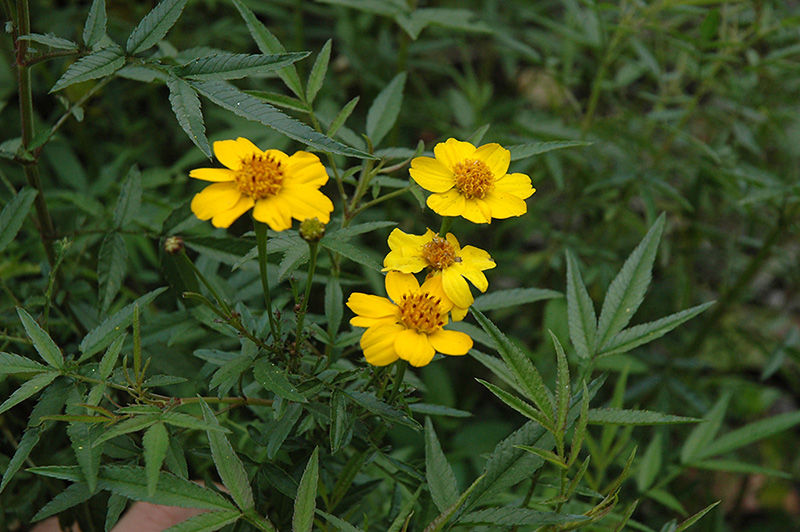Mt. Lemmon Marigold
Description
This variety has foliage with the fragrance of mint, and a hint of camphor; evergreen in frost free areas, but will die back and re-sprout in colder areas; striking daisy like flowers in winter through spring; prefers sun and is drought tolerant
Landscape Attributes
Mt. Lemmon Marigold is an herbaceous annual with a mounded form. Its medium texture blends into the garden, but can always be balanced by a couple of finer or coarser plants for an effective composition.
Mt. Lemmon Marigold is recommended for the following landscape applications;
Planting & Growing
Mt. Lemmon Marigold will grow to be about 4 feet tall at maturity, with a spread of 6 feet. When grown in masses or used as a bedding plant, individual plants should be spaced approximately 5 feet apart. Its foliage tends to remain dense right to the ground, not requiring facer plants in front. Although it's not a true annual, this plant can be expected to behave as an annual in our climate if left outdoors over the winter, usually needing replacement the following year. As such, gardeners should take into consideration that it will perform differently than it would in its native habitat.
This plant should only be grown in full sunlight. It is very adaptable to both dry and moist growing conditions, but will not tolerate any standing water. It is not particular as to soil type or pH. It is highly tolerant of urban pollution and will even thrive in inner city environments. Consider applying a thick mulch around the root zone in winter to protect it in exposed locations or colder microclimates. This species is native to parts of North America. It can be propagated by division.
Mt. Lemmon Marigold is a fine choice for the garden, but it is also a good selection for planting in outdoor pots and containers. Because of its height, it is often used as a 'thriller' in the 'spiller-thriller-filler' container combination; plant it near the center of the pot, surrounded by smaller plants and those that spill over the edges. It is even sizeable enough that it can be grown alone in a suitable container. Note that when growing plants in outdoor containers and baskets, they may require more frequent waterings than they would in the yard or garden.

